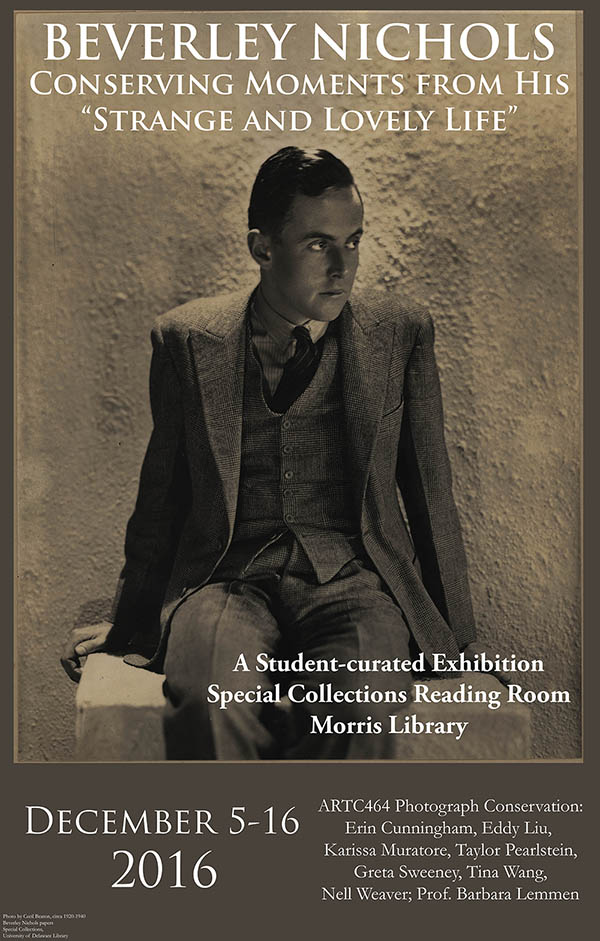“We both know, you and I, that if all men were gardeners, the world at last would be at peace.”
― Beverley Nichols, Green Grows the City: The Story of a London Garden (1932)
Beverley Nichols (1898-1983) is best remembered today for his humorous and poetic writings on gardening. In fact, his first gardening book, Down the Garden Path, has been in print almost continuously since its first publication in 1932. He was an accomplished author, writing more than 60 pieces, 30 of which were bestsellers, that covered a large variety of topics, including children’s stories, travel, politics, mystery, religion, cats, parapsychology, and autobiography. Beyond his life as a writer, Nichols also sought creative outlets as a playwright, journalist, composer, and public activist.
Nichols used his writing to push the boundaries of both public and private life and often blurred the line between the two. Although his “garden literature” brought him great fame, it was his position as a pacifist after World War I, his lifelong romantic relationship with English actor Cyril Butcher, and his promotion of sexual freedom that made him a controversial figure.
Students in the Fall 2016 session of Professor Barbara Lemmen's ARTC464 Photograph Conservation Internship class have curated this exhibition to study the printing process and condition of seven portraits from the Beverly Nichols papers in Special Collections at the University of Delaware Library.
Photographs in this selection are all gelatin silver developing-out-paper prints, or, simply, gelatin silver prints, the most prominent process in use during Beverley Nichols’ lifetime. The black-and-white images were formed by the chemical conversion of silver halides to particles of silver suspended within a layer of gelatin. Between this gelatin binder layer and the paper support is a layer of white baryta. The texture and gloss of the gelatin and/or baryta were manipulated by manufacturers to create a large range of textures and surface sheens. Furthermore, the inherent qualities of the paper, combined with toning and manipulation during printing and processing, meant that one photographic process could produce the range of images in this show.
Due to the complex nature of gelatin silver prints, they are highly vulnerable to chemical, physical, and biological degradation. While existing damage often cannot be reversed, it can usually be halted and additional deterioration prevented through conservation. This is especially true when a photograph is in the care of an institution, which can provide a safe and controlled environment, meeting preservation standards.
While this exhibit presents portraits, chronologically, of Beverley Nichols as an artist, public activist, sentimental gardener, and, of course, cat lover, it also explores variations of the gelatin silver prints. This selection focuses on one photographic process; all images depict Nichols as the subject. Each photograph captures a unique moment; together they illuminate our conservation study of a photographic process.
“Every moment of this strange and lovely life from dawn to dusk, is a miracle. Somewhere, always a rose is opening its petals to the dawn. Somewhere, always, a flower is fading in the dusk.”
― Beverly Nichols, The Fool Hath Said (1936)



